| Revista Umělec 2004/2 >> SHOPPING PUNK | Lista de todas las ediciones | ||||||||||||
|
|||||||||||||
SHOPPING PUNKRevista Umělec 2004/201.02.2004 Jiří Ptáček o Janu Nálevkovi | en cs |
|||||||||||||
|
“As an artist employed to sit in front of an advertisement agency TV monitor, he created a sentimental feeling towards an interface similar the way I felt about my father’s workshop. All he called laziness reached a peak if I were to leave the tools to work by themselves.”(Jana Kalinová)
If I had to select the most suitable description of Jan Nálevka’s artistic approach, one that would surely end up in the final round would be that of Jana Kalinová. She read it for the opening of the exhibition One is not enough (Jeden nikdy nestačí), at the Eskort gallery in Brno. Detractors might argue that it wasn’t so much about Nálevka as it was about the author herself. They must be right. I consider that as a confirmation of the highest quality of expressed ideas. Nálevka’s work can be understood as a set of notions about language and how far our own individuality can be represented under the least suitable conditions. The relationship between tendentious artifacts and investigation into “the author’s perspective” oscillates. For Jana Kalinová, to get close to her colleague, she had to shift the weight away, towards emotion, and from the artifact towards her own ideas. In order to come closer, she receded away. Portfolio, Catalogues and Collaboration As Jan Nálevka’s portfolio slowly expands, in principle the contents remain well-ordered with every new series. When Jan discovered in his student years that he could prolong the lifespan of the language of minimalism or stress the dynamics of readymade material, he kept any leaps and unexpected subversions to a minimum. He realized that the visual world could offer him ready-mades not only on the streets but also in visual culture. That the history of art with its cataloguing of artistic tendencies and genres takes part in the creation of specific terminologically treated sets, whose mental, immaterial character doesn’t exclude them from the group of “enclosed” projects, but offers to transfer them “elsewhere.” This is the same as what Marcel Duchamp did with his Bottle Rack. The only difference is that we don’t have to drag the object into a gallery from the outside, the whole structure of a ready-made is already present in the galleries (the central brains of the whole cultural indoctrination). A “Nálevka-like Duchamp” would be like carrying firewood to a forest, where each bundle forces the forest to move. The system is brought down and, newly supplemented, it falls back into place, perfectly. Nálevka’s work offers itself to be respected as the next one among a row of reactions, variants and transmutations of an original framework. His art is not authoritatively “earth-shaking,” doesn’t propose any paradigmatic revaluation and it subordinately submits to the matrix. That is why Nálevka is popular with traditionalists. In the Czech Republic, Jan Šerých and Jiří Skála, are in a similar situation. Nevertheless, it looks like all three of them implanted viruses into their “constructivist tendencies” that decentralize any affirmation of historic associations and spin them spirally, threatening manifold semantic collapse. The House of his Parents With Jan Nálevka examples of that virus could be found in the depths of history. But let’s stop in the middle and start at his parents’ house. A color photograph of a two floor house, The house of my parents (Dům mých rodičů, 2000), depicts a simple cube structure with a gray-beige facade, undoubtedly one of those peripheral buildings from the middle of the last century. There are thousands of those in small Czech towns, so there is nothing special about it. But when Nálevka photographed the house he probably knew what he would be saying. It is his parents’ home. Even if he doesn’t like the house it remains the house of his parents. When we read the title, we might think, “Maybe he didn’t even live in that house. He didn’t say that. Maybe he has no relationship to the house, except that he considers it important to state that it is the house of his parents.” The insecurity instilled by this structure, comes not from the building itself, but out of the textual comment. Does Nálevka only state the bare facts? Doesn’t his simple designation of house hide a whole maze of the artist’s emotional roots? Jan Nálevka doesn’t uncover this for free. An artifact is not as open a structure as it sometimes seems. We can contextualize ad infinitum with a subtle transfer of the minimalist terminology of Czech towns and villages, but when we try to penetrate into the relationship of the author to the house of his parents, we’ll have nothing for eternity. I am Nothing Without a Label What interested me in The House of my Parents what his contrast between the depiction and the title. They play an important role for Nálevka. They arouse doubts whether the things that appear in front of us can be inserted into other social contexts without reservation, such as the production-consumerist or the artistic-historic. The author himself always appears to us as an active agent representing a choice of potential interpretations; they relate to the artist himself yet remain ambiguous, undetected, enigmatic. His labels appeal to an emotional gesture and are a key to the depictions, but they are also the broom that brushes keys within the reach away from us. The stated visual code of the titles reveals its own introverted gracefulness. We live in a world filled with logos and slogans. They tend to influence and ease communication by presenting an image of some object, offered, demanded, or as spiritual consumption. They tax any authentic seeking for expression, reducing it and rendering any dialogue null and void. But when used irregularly they can still be very poetic. They can transform a broad human attitude by rolling a sincere profession into one clump with reflexive irony, emptiness, cynicism and schizophrenia. Jan Nálevka appropriated the slogan, Without You I Am Nothing (Bez vás/tebe nejsem nic), popularized by the pop-rock group Placebo, to finish one of his most successful concepts. He appealed to area businesses for money to make large printed pictures. Once the companies agreed they became his sponsors, and he created pictures presenting nothing more than the logo of each sponsor. But what was he thinking when he gave the work its title? Was he thinking about the fate of an artist to be condemned to that kind of promiscuous service of capital? Was he wondering what sympathy there’d be for that strategy of the contemporary artist’s practice? Was dealing with the bare fact of the existence of this strategy? Or was he thinking about the logos as a source of aesthetic simplicity that he wanted to hold onto? In fact, the cycle, entitled Without You I Am Nothing, proposed all such possibilities without offering any particular preference. Moreover, the cycle is linked to other cycles, drawing on commercial graphics. For the earlier Don’t Innovate, Imitate (Neinovuj, napodobuj, 2001), Nálevka put together fourteen black and white prints of Asian consumer goods that duplicate the products of more famous competitors. One can easily obtain these at Czech markets. Curiously, they are not created to deceive the customer. They may confuse an inexperienced shopper, but they aren’t substitutes for their models. There are other products on the market that do that, like Puma shoes, made by a company other than Puma. But Adidos is not Adidas, and it says so openly with its distorted logo such it can only be an “imitation.” But when Nálevka defines his cycle of acquired logos as an appeal to imitation, is he stressing the existence of a certain kind of product or is he challenging us, via individuality, to a deeper reassessment of the concept of originality, not just in art but in life as well? Is he lecturing us on post-modern relational identity, does he refuse the thesis of authentic personal experience, that folds when confronted by humanity walking in the footsteps of spiritual and political idols. Does he instead challenge it? To what? In a similar way, Shopping Punk (2003) uses cheap material, graphics from hypermarket cheap products. Nálevka prepared them as geometric and very colorful prints on T-shirts for a group exhibition entitled Czechoslovakia (Československo), in Bratislava. They were presented as a commentary on the clearance sale of two post-communist countries. As clothes the shirts also served as an expression of identity and identification using the image. The slogan, Shopping Punk, didn’t necessarily have to carry any social-ironical accent, it could also address our desire to proclaim thriftiness or poverty. Mine Intermezzo: Confused Identity. We usually speak about viruses when they subvert the electronic or bodily equilibrium of some system. Pragmatically, they disturb and, seen from a distance, they alter. Finally, a new level of system emerges. Both antivirus programs and medicine fight a losing battle for the restoration of lost balance, they expose the system’s dependence and impossibility of maintaining its structure (medicinal, zero-one or philosophical) without substitutes. Identity works in a similar way. It spills, has no boundaries, until it is grounded on some conception. Since 1995, Jan Nálevka has been occasionally working with Milan Mikuláštík as a duo called Mina. In 2003, they were asked by Filip Cenko and Pavel Ryška to contribute to the first compilation of the Czech art animation series called It’s A Question Of Lust. They decided to use a virus. They put together a simple slide show from their collected photographs. It was a touching picture of friendship tinged with acoustic guitar music. It had only one defect: the carefully exchanged faces of both boys; everyone could see that it is a montage. Simply put, the artists suddenly became Jan Mikuláštík and Milan Nálevka. Moreover, The Confused Identity (Popletená identita) really benefits from a virus of that kind, a printer’s gremlin in a review whose author didn’t pay much attention to which of Mina was Jan and which is Milan. With the realization that a exchange a joke had suddenly been created. Perhaps that’s the moment when we realize the closeness of two people befriended for as long a time as Nálevka and Mikuláštík have known each other, and how the interaction of one person with another threatens the conception of an individual. Healing Herbs and a Question Mark... and an Exclamation Mark Jana Kalinová asked herself what happens when we leave machines to work for us, in the workshop of her father. She did not try to answer that question in her text on Nálevka. Some answers were offered by the gray prints on the walls of the Eskort gallery. In a certain sense they resemble Nálevka’s older works that we haven’t discussed. They appropriate a particular interface of the latest version of Adobe Photoshop. “As source material we used photographs which had been saved in that computer program, which we subjected to all of the visual effects available from its default setting. The special effects applied to the photographs in the order that they appear in the program’s menu, using their automatic adjustment settings,” wrote Nálevka about his method in accompanying literature. Gray ovals create the illusion of undulating and intertwined mandalas. “On the prints small differences apparent in symmetry and color are the remnants of the difference between the head of an eagle and a seaside resort. The expressive individuality is a welcome contribution that is apparent only in the nuance of one or two shades of the Pantone Matching System,” writes Kalinová. The words, “expressive individuality,” touch a paradox. Wherreas all the pictures look nearly the same, they are different. The artist so respected the Photopshop interface that he followed its instructions and didn’t attempt any combinations. Similarly, he has always respected the historical consequences of art and looked around for strategies and orders that simplify our orientation in the world. More complicated approaches would be open only to those who seek to rebel against the world. Nálevka tried to avoid that in One Is Not Enough (Jeden nikdy nestačí) – with one exception: this time he kept his virus “title” to himself and mentioned it only at the end of his otherwise dry description of his method. “Is the resemblance to medicinal lyrical abstractions just coincidental?!” Question mark... and exclamation mark. Irony...? The exact use of the proposed method begs contemplation. Who am I when I use the manual. The one putting into operation something contingent by its creator. But I have a choice with every manual: to adjust myself to it or to refuse it. I can go through it randomly. But who is the one testing and who is being tested and under which conditions? Tools consider themselves human extensions, but these hands are not just mine. Am I more held than holding? Who holds me, when I am presented with the exact manual to the vision of the super-exact? What Jana Kalinová calls the “invoking of the spirit of the Photoshop,” speaks for itself about the limits of a tool’s use, suggesting that there may be another layer to the strategy. Although we can follow the trivial visual secretion of mechanics, once it is properly commented on, it functions as a switch between seemingly unconnected thought circuits. Reality Show: Minefield Laid! I don’t want to deny that there are other ways of viewing Nálevka’s work, and that I took part in them. But the more I think about it, it seems that Nálevka is leading us into a minefield. Every mine lies in the ground by itself, but collectively, they have still been laid according to one map. Nálevka allows us to tread on the field particularly because he want us to think less and less about what the bombs might do to us, and to concentrate more on the pitfalls in the rules of the whole. Once we are distracted from the way “between,” we get stuck legless in the crater of endless meanings. It is better to remain on the border line and watch as Nálevka opens up the scissors of the visual and textual part of his work as advice about how not to put a foot in the wrong place.
01.02.2004
Artículos recomendados
|
|||||||||||||
|
04.02.2020 10:17
Letošní 50. ročník Art Basel přilákal celkem 93 000 návštěvníků a sběratelů z 80 zemí světa. 290 prémiových galerií představilo umělecká díla od počátku 20. století až po současnost. Hlavní sektor přehlídky, tradičně v prvním patře výstavního prostoru, představil 232 předních galerií z celého světa nabízející umění nejvyšší kvality. Veletrh ukázal vzestupný trend prodeje prostřednictvím galerií jak soukromým sbírkám, tak i institucím. Kromě hlavního veletrhu stály za návštěvu i ty přidružené: Volta, Liste a Photo Basel, k tomu doprovodné programy a výstavy v místních institucích, které kvalitou daleko přesahují hranice města tj. Kunsthalle Basel, Kunstmuseum, Tinguely muzeum nebo Fondation Beyeler.
|







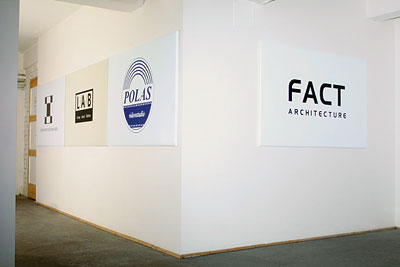























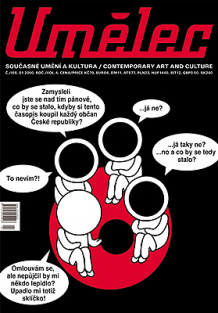




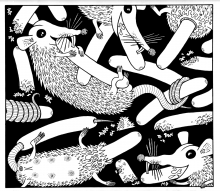

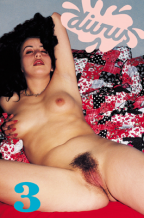
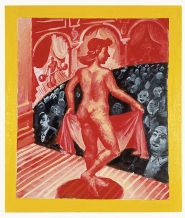


 New book by I.M.Jirous in English at our online bookshop.
New book by I.M.Jirous in English at our online bookshop.
Comentarios
Actualmente no hay comentariosAgregar nuevo comentario